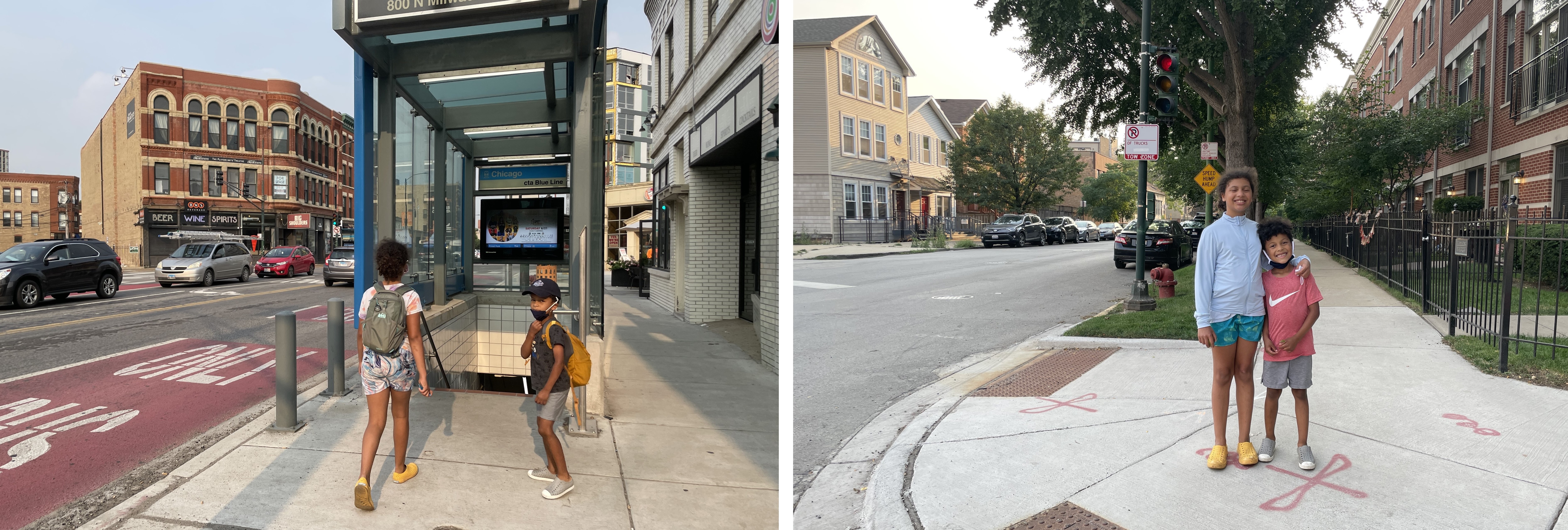CMAP Executive Director Erin Aleman shares why accessibility matters to her and how it’s important for the region to work together.
When I was expecting my first child, I focused on the usual uncertainties: How do I swaddle the baby comfortably? Do I have enough diapers? Will I ever sleep again?
But I didn’t worry about how I would get around with a new infant. I had always thought our neighborhood was walkable, and I lived with my husband about a block away from a transit station. I quickly discovered traveling with a baby is like solving a complex riddle. I had to plan ahead more and figure out how to carry both a baby and a stroller up and down platforms while riding transit.

Many of us from the able-bodied community take simple, everyday activities like this for granted. But we also have resources that aren’t available to people with disabilities. People of all abilities across our region and our country deserve accessible spaces and ways to travel.
People with disabilities face mobility challenges and more each day in northeastern Illinois. At the Chicago Metropolitan Agency for Planning (CMAP), we’ve learned through our research that residents with mobility, vision, or hearing impairments are significantly more likely to stay at home on an average day than others in our region. One in five of residents with a disability reported that they did not travel even when they wanted to.
The landmark Americans with Disabilities Act (ADA) turns 31 today and brings an opportunity for our 284 communities in northeastern Illinois to make meaningful change in people’s lives. When it became law in 1990, the ADA prohibited discrimination based on disability for the first time and set standards to make public spaces and workplaces accessible to all.
But our region is falling behind when it comes to removing barriers for people with disabilities to move around the region and access opportunity. Without better designed communities, residents with disabilities face challenges in getting to jobs, going to the doctor, and shopping for basic necessities.
In a report last year, the Metropolitan Planning Council found that nearly 178 municipalities in northeastern Illinois don’t have ADA transition plans. Mandated by the federal government, these plans allow communities to identify ways to make sidewalks, crosswalks, curb ramps, and landings easier to navigate.
As the region’s planning organization, CMAP is here to help communities with limited resources develop an actionable framework and secure the funding to ensure all residents can move more freely throughout our seven counties. Through our planning programs, we will work alongside partners like the Illinois Department of Transportation to make sure communities are creating and acting on ADA transition plans. CMAP also has a list of resources, including toolkits that can guide municipalities in this work.
Accessibility issues aren’t always apparent to able-bodied people. When done well, changes that make public spaces more walkable and equitable are seamless and often go unnoticed. They also benefit more than the intended group: Curb cuts at sidewalk corners became invaluable and have made trips less strenuous for not only my kids but their grandparents.
Northeastern Illinois can be a leader in completing and implementing ADA transition plans. Collectively, our communities can uphold the hallmarks of the ADA law — equal access and improved quality of life for all. With a strong vision, hard work, and comprehensive planning, I believe we can solve this complex riddle and create a more inclusive region where all people thrive.
Do you want to make northeastern Illinois more accessible? Hear from residents with disabilities in our region and start making an ADA transition plan for your community.